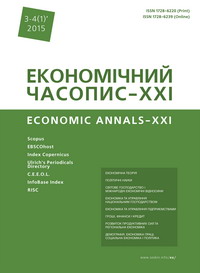Overview of proactive and reactive activities in corporate crisis management
Overview of proactive and reactive activities in corporate crisis management
Author(s): Anastasia Kasianova, Anatoliy MazarakiSubject(s): Economy
Published by: Institute of Society Transformation
Keywords: Corporate Management; Crisis Management; Preventive Management; Proactive Activities; Reactive Activities; Risk Management
Summary/Abstract: Introduction. A theoretical framework which is proposed is based on different directions of corporate crisis management implementation. There is still a disputable question about the role and place of reactive and proactive activities and their effect on improving financial, economic and organizational state of a company. Purpose. This paper focuses on two directions of crisis management, which involve preventive measures to avoid crisis and reactive measures to counter or mitigate it. Methodology. The paper explores scholarship regarding the developing concept of pre-crisis management (proactive activities), as well as reactive activities of crisis management as an integrated process which is more commonly used in critical crisis situations. Results. This study traces the development of measures and activities which are used in corporate management. While crisis anticipation and prevention have become almost established as integral components of organizational crisis management, there is no agreement about their role in countering crisis and specific situations where they can become the most valuable. The concept of crisis management gives a broad perspective of managerial activities within it. It enables to discuss important directions of crisis management as proactive and reactive enterprise activities, as well as the differences between crisis detection, crisis planning, mitigation of a crisis, etc. It also reveals some misunderstanding about terms of corporate crisis management, risk management, preventive crisis management and anticipating crisis management which in real time situations can be confused while making crucial decisions in running a company. It is possible, for example, to apply different activities of corporate management by adopting a flexible localization strategy, preventive strategy or a strategy of minimizing influence of a potential crisis or an already existing one. Conclusion. The given framework proved to be useful in improving the distinction of different directions of crisis management activities. Overall understanding of corporate crisis management, its elements, criteria and its tool of implementation against crisis also increases the efficiency of countering crisis in all its implications. A set of criteria which help distinguish such elements of corporate management as preventive management, crisis management and risk management enable to determine the most appropriate decisions in order to surmount crisis.
Journal: Економічний часопис - ХХІ
- Issue Year: 149/2015
- Issue No: 03+04 (1)
- Page Range: 42-45
- Page Count: 5

